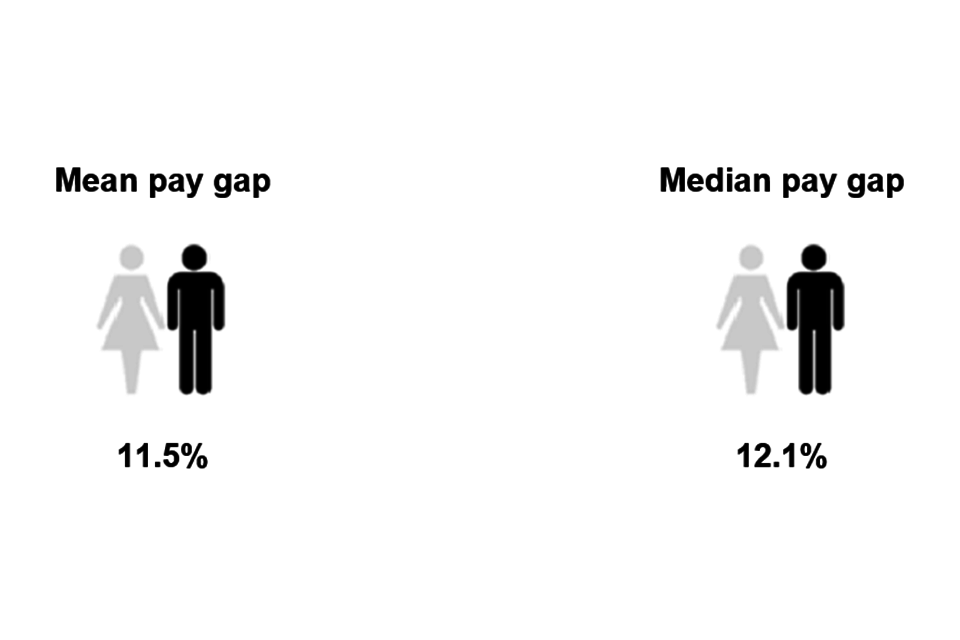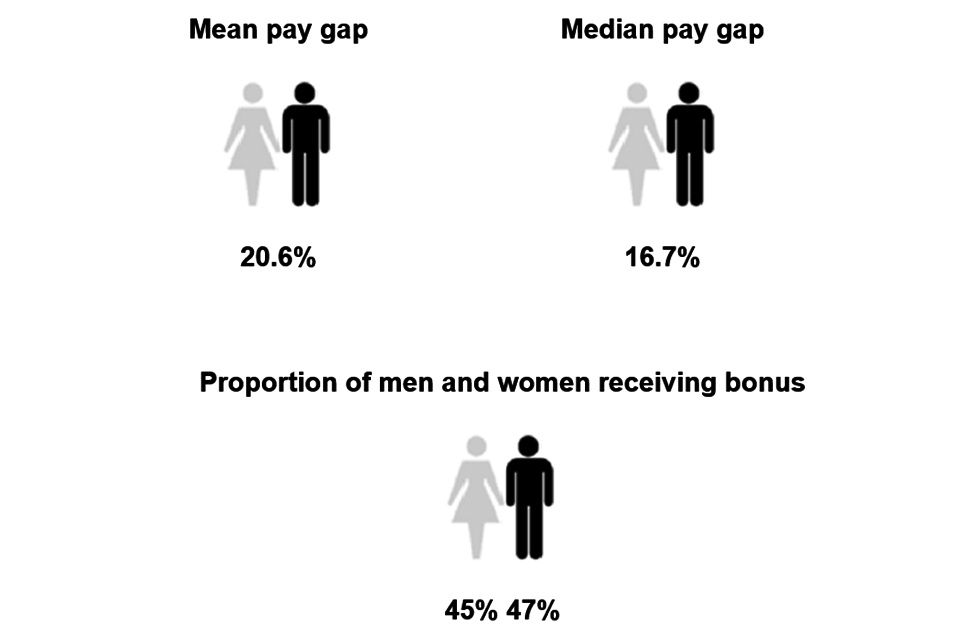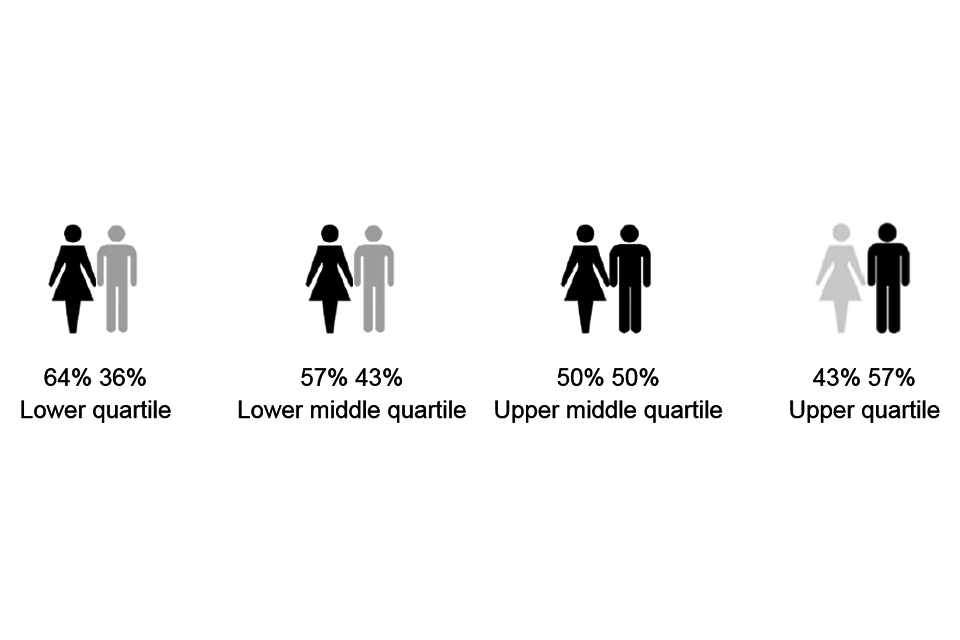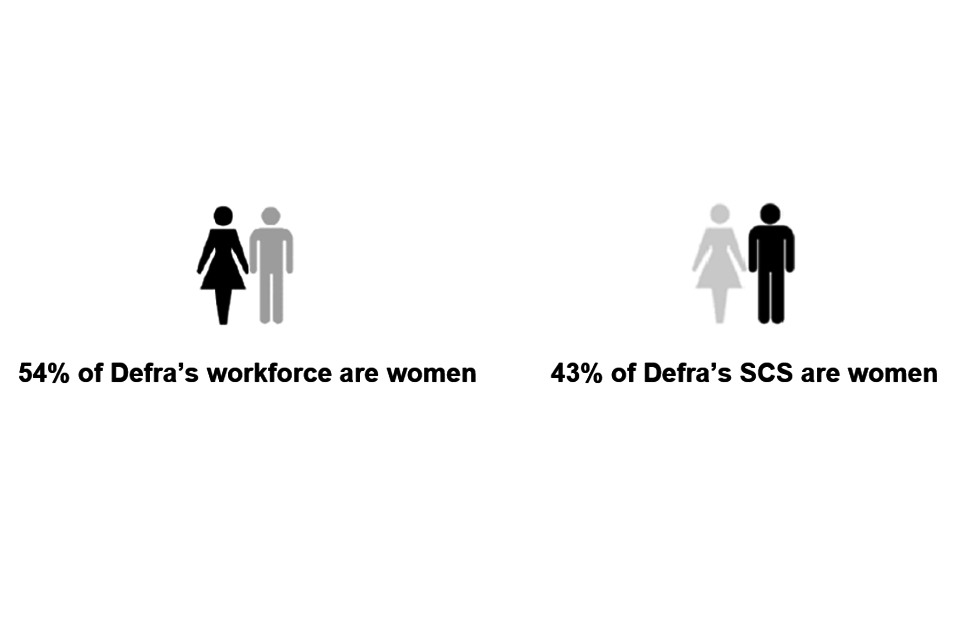Defra's gender pay gap report 2017
Published 18 December 2017
Background
Earlier this year, the Government introduced world-leading legislation that requires organisations with 250 or more employees to report annually on their gender pay gap.
Government departments are covered by the Equality Act 2010 (Specific Duties and Public Authorities) Regulations 2017 which came into force on 31 March 2017. These regulations underpin the Public Sector Equality Duty.
The Regulations require relevant organisations to publish their gender pay gap data by 30 March 2018 (and then annually). This should include mean and median gender pay gaps; the mean and median gender bonus gaps; the proportion of men and women who received bonuses; and the proportions of male and female employees in each pay quartile.
The gender pay gap shows the difference in the average pay between all men and women in a workforce. If a workforce has a particularly high gender pay gap, this can indicate there may be a number of issues to deal with, and the individual calculations may help to identify what those issues are.
The gender pay gap is different to equal pay. Equal pay deals with the pay differences between men and women who carry out the same jobs, similar jobs or work of equal value. It is unlawful to pay people unequally because they are a man or a woman.
The Department for Environment, Food and Rural Affairs (Defra) supports the fair treatment and reward of all staff irrespective of gender. The Defra group Equality, Diversity and Inclusion (EDI) strategy 2017 – 2020 sets out our ambition to be a top performing organisation, with a diverse range of talent and our commitment to creating a culture where everyone can bring their whole self to work and their uniqueness is truly valued.
This report fulfils the Department’s reporting requirements, analyses the figures in more detail and sets out what we are doing to close the gender pay gap in the organisation.
Context
Defra has several executive agencies, whose staff have been included in these figures as required by the legislation. These include Animal and Plant Health Agency (APHA); Rural Payments Agency (RPA); Centre for Environment, Fisheries and Aquaculture Science (Cefas) and Veterinary Medicines Directorate (VMD). All references to Defra in this report include our executive agencies as listed.
At 31 March 2017, 6709 people worked in Defra. 54% of all staff in Defra were women, and 43% of Senior Civil Servants (SCS) in Defra were women.
Defra gender pay gap

Mean pay gap - 11.5% male; median pay gap 12.1% male
Defra uses Civil Service grades ranging from Administrative Assistants (admin level grade) to Senior Civil Servant (executive level grade). Grades vary according to the level of responsibility that staff have. Each grade has a set pay range with pay gaps in between grades. Staff are expected to move through the pay range for their grade, therefore the longer period of time that someone has been in a grade the more we would expect them to earn irrespective of their gender.
The average (mean) hourly rate for males is 11.5% higher than females. The median gender pay gap is 12.1%.
Bonus pay gap

Bonus pay gap - figures set out in tables after the image
| Mean pay gap | 20.6% (higher for male) |
| Median pay gap | 16.7% (higher for male) |
| Female | Male | |
| Proportion of men and women receiving bonus | 45% | 47% |
Defra’s performance awards were paid as a set value depending on grade and performance level, irrespective of gender. Bonuses were paid on a pro rata basis for staff who worked part-time. At 31 March 2017, 32% of women in Defra worked part-time compared to 7% of men. As calculations reflect the actual value of bonuses, this is reflected in the size of the bonus pay gap even though the proportion of men and women receiving bonuses is similar.
Hourly pay quartiles

Hourly pay quartiles - figures set out in tables after the image
| Female | Male | |
|---|---|---|
| Lower quartile | 64% | 36% |
| Lower middle quartile | 57% | 43% |
| Upper middle quartile | 50% | 50% |
| Upper quartile | 43% | 57% |
The hourly pay quartiles data show the proportion of men and women that are in each pay quartile, when we arrange staff in order of hourly pay rate. The lower quartile of staff comprises 64% female staff and the upper quartile comprises 43%.
Gender make-up of the Department
As 54% of the department’s staff are women, this illustrates that the pay gap is largely as a result of a higher concentration of women in more junior grades, where pay is lower, and fewer female staff in more senior grades. A breakdown of gender representation at each grade is shown below.

Gender make up of the department: 54% of Defra’s workforce are women, 43% of Defra’s SCS are women
| Grade (increasing seniority) | Number of men (% of men who work at this grade) | Number of women (% of women who work in this grade) | % of persons at this grade who are women |
|---|---|---|---|
| AA | 13 (0%) | 11 (0%) | 46% |
| AO | 584 (19%) | 1075 (30%) | 65% |
| EO | 661 (21%) | 849 (24%) | 56% |
| HEO | 652 (21%) | 647 (18%) | 50% |
| SEO | 571 (18%) | 566 (16%) | 50% |
| G7 | 431 (14%) | 323 (9%) | 43% |
| G6 | 135 (4%) | 80 (2%) | 37% |
| SCS | 63 (2%) | 48 (1%) | 43% |
(Percentages in this table may not sum to 100% due to rounding)
Working to reduce the gender pay gap
Defra is committed to improving our gender pay gap and delivering a number of initiatives through our Equality, Diversity and Inclusion strategy to support women in the workplace:
- Active support for women returning to work following maternity or adoption leave. We offer shared parental leave, job share, part-time opportunities and flexible working. We equally offer these opportunities to men to enable all employees to fulfil their caring responsibilities irrespective of gender.
- We help women to progress their careers through schemes such as the Positive Action Pathway (a talent programme for under-represented groups) and Crossing Thresholds (a year-long career development programme for Women in the Civil Service).
- We provide a range of employee led networks supported and championed by Defra’s senior management and Equality and Diversity and Inclusion teams. Defra’s Women’s Network aims to help women reach their full potential by providing advice and support, contributing to policy development and establishing good practices. In addition to the Women’s network Defra also has a Job Share Network, Parental Leave Buddy Network and a Work Life Balance Network.
- We monitor pay to identify any pay differences and take targeted action, where appropriate and where budget constraints allow.
